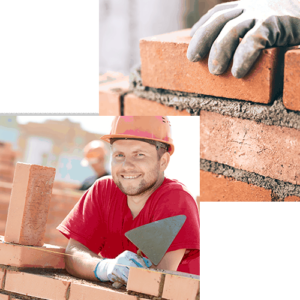R.C Fence LLC provides homeowners privacy, defines property lines, and marks utility locations. Before starting any fencing project, homeowners should consult local regulations and homeowners associations.
Laws and regulations vary by municipality, but they’ll likely include information about how close a fence can be to the property line, what a wall must look like, and more.

A privacy fence creates a barrier between your outdoor space and the rest of the neighborhood, which can be especially helpful in urban and suburban areas short on private property. It can keep trespassers out and also provides seclusion from nosy neighbors and traffic noise. While it cannot completely prevent someone from seeing into your yard, a properly installed privacy fence will keep them out as much as possible.
For complete privacy, your residential fence should have close-spaced pickets and be at least six feet tall. Some homeowners opt for higher privacy fences, but these can be expensive and require a lot of maintenance. To keep your fence looking its best, you should re-stain or paint it at least once a year. For maximum longevity, consider using a stain that is free of lead and other harmful chemicals, such as those containing volatile organic compounds (VOCs).
Before you invest in a privacy fence, make sure to research your community’s limitations, which may include HOA restrictions on the kind of fencing allowed, height limits and materials used. You should also make sure to locate property lines to avoid building on the boundary of your land and have any necessary zoning permits in place before starting construction.
Wood is the most popular privacy fence material, but it requires regular care to keep it in good condition. It should be stained or treated annually to protect against moisture, insect damage and rot. A high-quality cedar privacy fence can last for decades with proper treatment, while cheaper pine varieties may need to be replaced more often.
Another alternative is vinyl fencing, which is an affordable option that looks like real wood and offers a similar level of privacy. It does not rot, but it is less durable than wood and may require replacement sooner than you might expect.
If you decide to go with a vinyl or wood fence, it’s worth investing in professional installation. It will ensure the job is done correctly, with minimal chance of sagging or other problems that can detract from its appearance and durability. You should also be sure to follow all safety guidelines, such as calling city services before digging so important pipes or wires are not damaged during the construction process.
A residential fence may not only protect your home or business from the outside world, but it can also help deter criminal activity. According to Zillow, burglars are less likely to target homes with fences, because a well-made and sturdy one makes it more difficult for them to breach the property’s boundaries. Additionally, if a fence surrounds a pool or playground equipment, trespassers are less likely to enter the area and put themselves in danger.
Of course, not all fences are created equal when it comes to security. Barbed and razor wire fences are notoriously effective in deterring trespassers, but they may not be ideal from an aesthetic or zoning standpoint, and can even inflict harm upon unintentional targets like children and pets.1
Moreover, a residential fence can be equipped with motion sensors that can turn it into an active security sentinel by activating loud alarms when someone attempts to tamper or scale the structure. This early detection can give homeowners and business owners precious time to assess the situation, take precautionary measures, or notify the authorities.
Residential fences can also be designed to be harder to climb by making their vertical supports more rigid or using materials that are difficult to cut and bend. Welded wire mesh fencing, for example, is a good choice because it’s nearly impossible to climb and can be modified to include narrow holes for gates or other planned access points that will be difficult to force open.
Another residential fencing concern involves property lines. Before you begin construction, make sure to consult your property survey and understand the boundaries of your property so that your fence doesn’t inadvertently encroach on your neighbor’s land.
If you’re building a fence on the boundary between your property and your neighbor’s, you may need to serve notice to your neighbor before embarking on the project, or risk an adverse possession lawsuit. The best way to avoid this is to get your neighbor’s approval prior to constructing the fence, or to build a shared fence that marks both properties’ boundaries.
Fencing is not only meant to contain pets and children, but also to enhance the look of a residential property. As homeowners started to focus more on aesthetics, many residential fence designs began to take on an ornamental style. Wood and iron were often used in these new, decorative styles to add a sense of grandeur to homes, as well as provide additional security. Today, a variety of fencing materials are available to homeowners, from traditional wood to vinyl and aluminum. Many of these are designed to match the look of other design features of a home, allowing for a more seamless aesthetic.
A classic wooden picket fence, for example, can be spiffed up by hanging cascading vines and climbing plants that burst with color and blooms and provide a living canvas. This style of fencing is an ideal option for homeowners who want to add natural beauty to their backyard.
Another popular non-traditional fence style is a wood lattice fence. This style consists of a wooden framework made by crisscrossed strips of lumber, creating an eye-catching and unique look that can instantly enhance the landscape. These fences are also easy to customize, allowing homeowners to choose from a wide variety of colors and finishes to complement their homes and garden.
In addition to incorporating greenery, fencing can be topped with decorative post caps that add visual interest and height, helping to delineate the boundary of your home’s property. For those who prefer a more minimal aesthetic, metal fences can provide a clean-lined and modern look that blends seamlessly into contemporary outdoor spaces.
Lastly, a wood fence can be constructed from pine, fir or cedar to create a more rustic, warm and welcoming aesthetic, or even redwood for an upscale feel. All of these options are relatively affordable and durable, and if treated with a water-repellent stain, will last for years. Alternatively, a wood composite fence can be an excellent choice for homeowners who are concerned with the cost of maintenance. These fences are engineered to emulate the natural beauty of wood, and come with a warranty against rot and insect damage.
A fence can be a major undertaking, and it’s important to properly maintain the structure. This will extend the life of the fence and help to prevent damage. The first step in maintenance is a thorough inspection of the fence to identify any potential issues, such as loose boards or rust on metal hardware. Once the problem is identified, it can be repaired or replaced to preserve the fence’s integrity. In addition, it’s crucial to regularly remove debris and plant growth from the fence to prevent excessive moisture buildup that can lead to wood rot. Different seasons require special attention, so it’s important to adjust your maintenance routine accordingly. For example, snow removal is critical for preventing weight damage to the wall during winter and clearing away leaves in fall to prevent moisture accumulation that promotes rot in summer.
A residential fence can also be a source of conflict between neighbors regarding property lines and responsibility for repair. It’s important to understand your local laws and any previous agreements between neighbors that may dictate the responsibilities for repair and maintenance of a shared fence.
It’s also important to check with your town to see if there are any building or construction permits required for fencing installation. These requirements vary by municipality, and failure to obtain the proper permits can result in fines or penalties. Additionally, if your neighborhood has a homeowners association (HOA), the rules can have additional restrictions on fence style and placement.
If you have a neighbor who is violating these rules, it’s essential to communicate with them and find a solution. If you are unable to reach an agreement, a New York real estate lawyer can help you resolve the issue through legal action if necessary. However, it’s best to try to resolve these issues through open and respectful communication. This will keep the peace and improve your neighborhood’s overall quality of life.
